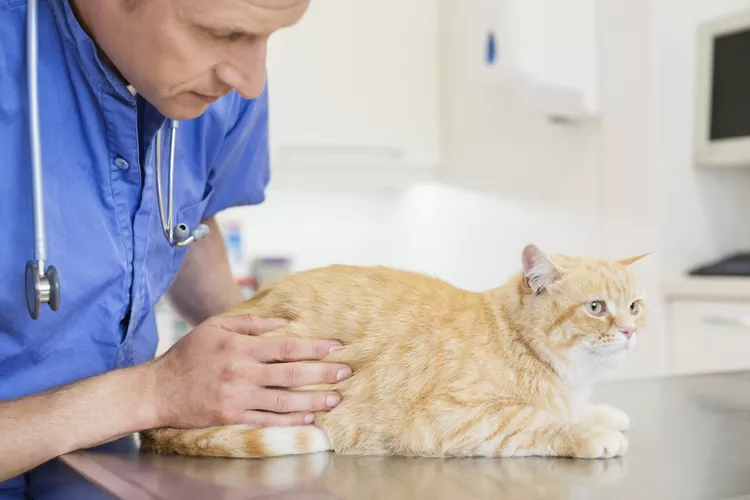How to Take Your Cat's Temperature

The only way to know for sure whether your cat has a fever is to take its temperature. The whole process should only take a few minutes, provided the cat isn't resisting you. The normal temperature for most cats is between 100.5 and 102.5 degrees Fahrenheit. Higher temperatures may require a visit to the veterinarian, depending on other symptoms.
Before You Begin
Watch your cat for certain behaviors that can accompany a fever. These allow the cat to conserve energy so more can go into fighting the disease that provoked the fever. Fevers fight disease by stimulating the immune system and slowing the growth of bacteria and viruses. Although fevers can sometimes help fight illness, a fever higher than 106 degrees Fahrenheit can cause organ damage. Contact your vet as soon as possible if your cat has a high fever.
Watch out for these telltale signs of a fever:
- Loss of appetite
- Depression
- Lack of energy or activity
- Decreased drinking
- Decreased grooming
- Shivering or rapid breathing
- Sneezing
- Vomiting
- Diarrhea
You can either take your cat's temperature rectally, or via its ear, but rectal temperatures are more accurate. If you're trying to determine just how high the cat's temperature is, use a rectal thermometer. Digital thermometers give a reading much faster and make the process shorter. Make sure you keep the thermometer separate so that it's only used on the cat.
What You Need
To take a rectal temperature, gather the following:
- Human rectal thermometer
- Vaseline or KY Jelly for lubrication
- Timer with second hand
- Towel
Prepare the Thermometer, Then the Cat
Turn the thermometer on and set it to zero, then lubricate the thermometer with the Vaseline or KY Jelly. Stand the cat on the counter and hold it securely with your arm. Its face should be resting in the crook of your elbow with its tail end toward your other hand. If necessary, wrap the cat in the towel with its butt end protruding.
Insert the Thermometer
Lift the cat's tail with one hand while inserting the thermometer slowly and steadily into its anus, to a depth of 1/2 to 1 inch, with your other hand. You will feel the sphincter muscle tighten, then relax. Hold the thermometer there for two minutes (or until it beeps if it is digital) while talking to the cat in a soothing voice.
Remove, Record, and Wash
Remove the thermometer. Record the temperature and the date and time. Wash the thermometer well with warm water and disinfectant soap, then store separately from any thermometers used for humans. Thoroughly wash your hands and the sink where you washed the thermometer; cat feces can contain many harmful bacteria.
Taking Your Cat's Temperature via Its Ear
Although the cat is less likely to resist you if you take its temperature via its ear, the process can be a bit more difficult. Ear thermometers need to be placed in the right area to get an accurate reading. While your cat may tolerate this method better than having its temperature taken rectally, the animal may try to get away from you. If it does, grab it by the scruff of the neck, which usually (if temporarily) will calm most cats.
Insert a digital ear thermometer in your cat's ear. Hold it horizontally while keeping the cat's head still. When it beeps to let you know it has a reading, release your cat and record the temperature. Thoroughly clean the thermometer.
Preventing Problems With Your Cat During Readings
If you are having trouble with getting an accurate read, a second (or third) set of hands can be helpful. If one person can hold the cat, the other can usually handle the thermometer. A temperature of 105 degrees Fahrenheit is a dangerous level and your cat should be seen by a veterinarian immediately. If it's higher than 103 degrees Fahrenheit, you should call your veterinarian for advice.